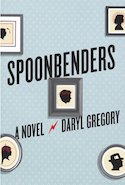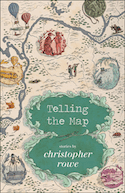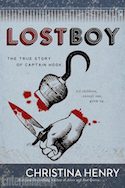Future Alternative Past: Dividing past the dividing lines
Every month, Nisi Shawl presents us with news and updates from her perch overlooking the world of science-fiction, fantasy, and horror. You can also look through the archives of the column.
Subbasements
Some folks consign SFFH to the nether regions of literature. Never mind that the world’s earliest tales, whether duly recorded and or merely oft-repeated — Beowulf, The Story of Hong Gildong, The Blazing World, the Ramayana, and many others — can also easily be seen as fantasies, horror stories, and fictions based on then-current science. Modern speculative fiction, say these critics, is formulaic and predictable and totally unworthy of readers’ time and attention. Of course this bothers some of us.
Much like oppressed African Americans dividing themselves up according to skin color (if you’re ignorant of this phenomenon, read about the paper bag test), the SFFH community divides the genre into a hierarchy of smaller subgenres. Top of the heap depends on who you ask, but the cases for both the “literary” and “hard” versions of science fiction have their proponents.
Literary SF supposedly hews most closely to mainstream or “mimetic” literature’s values, which latter ostensibly focus on conveying consensus reality to its audience using conventional techniques. (Note that mimetic is the label applied to this sort of writing by nonmimeticists.) Calling a book such as John Crowley’s Engine Summer literary SF implies that it’s descriptive, character-centered, and pretty much plotless. Two out of three right.
The term “hard SF” is generally accepted to mean fiction which extrapolates from known science. But that’s not all there is to fitting into the hard SF category. For one thing, plenty of lists of this subgenre’s best books include those in which it’s possible to travel faster than the speed of light, such as the wonderful Use of Weapons by Iain M. Banks. Nothing we know now says that’s ever going to be possible. For another thing, what qualifies as science can be a little less inclusive than what’s covered by the dictionary definition. Physics is always good, ditto mathematics, astronomy, and chemistry. But biology will frequently be left out of the science category, with the lamentable result of lists excluding Nancy Kress’s thought-provoking “Beggars in Spain.” And don’t even ask about anthropology, sociology, or other “soft” disciplines.
One factor keeping writers out of the ranks of hard SF authors in the past was being born non-white and non-male. That’s changing, though there’s a lag effect due to previously published criticism.
Space opera, a subgenre of interstellar tales long associated and often overlapping with hard sf, has recently rebooted itself. So-called “New Space Opera” takes social justice concerns seriously, and seems to have attracted proportionately higher participation by women and people of color such as Gwyneth Jones), Vandana Singh, Ann Leckie, and Aliette de Bodard.
The popularity of subgenres is time-critical: for the moment, steampunk’s star has waned; stories of zombies, though the monsters of their premise are typically cold-blooded, are hot right now; cyberpunk’s flame burned bright at first, then flickered, then revived; dystopic and utopic fiction battle it out for supremacy on the virtual shelves of online retailers around the globe. Categories of SFFH both arise and die; Tobias Buckell’s Sly Mongoose owes much of its neo-pulp feel to the vanished subgenre of boys’ diving adventures.
People enjoy categorizing the world. Even if and when the SFFH community emerges from the literary basement we’ve been relegated to by some of taste’s arbiters, we insiders will probably see distinctions between more of our genre’s subgenres than outsiders could ever know or care about.
Recent books recently read

Spoonbenders (Knopf) is Daryl Gregory’s tenderly hilarious take on the dysfunctional family life of showbiz psychics. The publisher calls Spoonbenders “literary fiction.” But I’m going out on a limb here and saying that since Gregory has stated publicly that he doesn’t think distance viewing, precognition, or hands-off cutlery-mangling really happen, this book is some variety of SFFH. Chapters alternate viewpoints between a pot smoking, masturbating teen prone to out-of-body experiences; a crippled con artist; a human lie-detector; and a man whose tortured existence proves that a genuine ability to see the future would make obsessive compulsive personality disorder a picnic by comparison. The action alternates, too, switching between the scenes set in the 1960s and the summer of 1995. The plot involves revenge, with the inexplicable Rube Goldsbergesque machinations of precog Buddy providing a ticking time bomb, and the denouement a highly pleasurable explosion.

Though most of the stories in Christopher Rowe’s new collection Telling the Map are SF, its cover is reminiscent of Edward Gorey’s weirdly off-kilter illustrations for disturbingly dark children’s books. That cognitive dissonance is a perfect replication of Rowe’s style: in “The Border State,” long-awaited sequel to his acclaimed 2004 story “The Voluntary State,” Rowe pits hymn-singing, bicycle-racing teens against a nanotech-wielding rogue AI; in “Another Word for Map Is Faith,” earnest Christians remake the world in the image of holy maps — with deadly consequences. Delightfully strange, these ten stories transport readers to futures full of sentient cars pining for their owners, automated horses, and tomatoes grown to give blood transfusions — an odd and interesting and deceptively bucolic setting for the narration of some astonishing events.

Peter Pan, fantasy’s favorite sociopath, is the villain of Christina Henry’s Lost Boy (Penguin). Subtitled The True Story of Captain Hook, this new novel follows the pattern Henry established in her earlier novels Alice and Red Queen, retelling a familiar tale from a wrenchingly different viewpoint. Hook, known here as Jamie, is revealed as Peter’s original playmate, brought to the magical island of Neverland as a boy; over a few days, first-person narration details his realization of Peter’s centuries-long betrayal. Much of the book’s content is non-canonical: giant spiders menace Jamie and his fellow Lost Boys, who arrive in Neverland via a tunnel rather than flying there. Fairies and fairy dust are unheard of. Sweat and dirt and blood are sprinkled liberally throughout the pages. Still, elements of the story are predictable, and the author’s fast pacing can’t keep those — and the ending — from being absolutely no surprise.
A few upcoming not-cons
I’m Armadillocon 39’s Guest of Honor, which means I’ll do a reading, give a speech, lead a workshop, participate in panels, and eavesdrop on panels about my writing. And lend an air of grace and credibility to the overall proceedings, I hope. Of course I encourage you to attend; besides my presence and the others listed officially on the con’s site, I happen to have heard that you’ll be blessed with appearances by Joe R. Lansdale, Chris Brown), and L. Timmel Duchamp. Yes, it’s in Texas. But Austin, okay?
Not all the cool kids are coming to Armadillocon, though, because Worldcon, the 75th World Science Fiction Convention, takes place in Helsinki the very next week. Sure it’d be great to do both, but I’m not. Though I wish I could. Worldcon’s GOHs include Nalo Hopkinson and Tiptree Award winner Johanna Sinisalo. Plus it’s in Finland, which is probably quite a bit more hospitable in August than Texas, temperature-wise. Just remember not to feed the trolls.